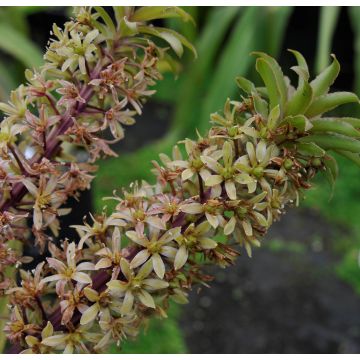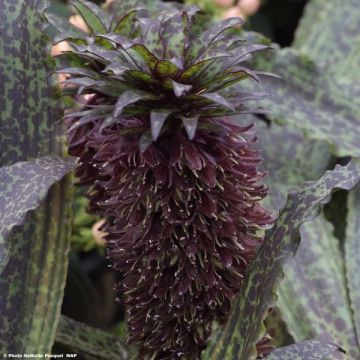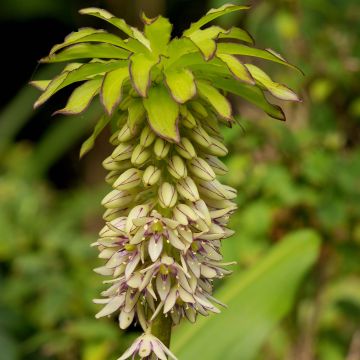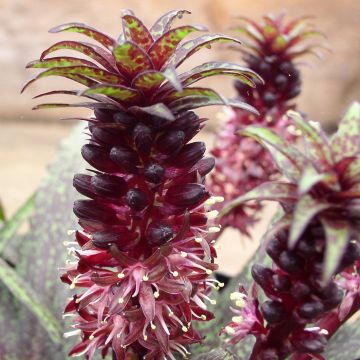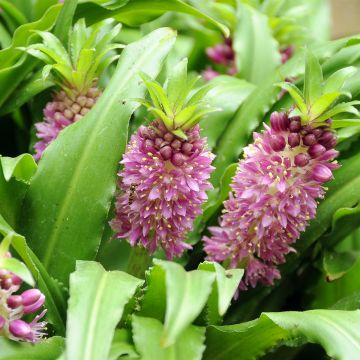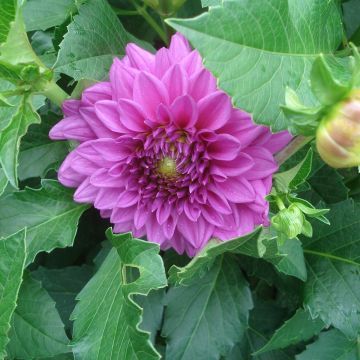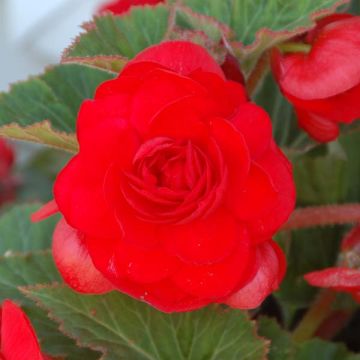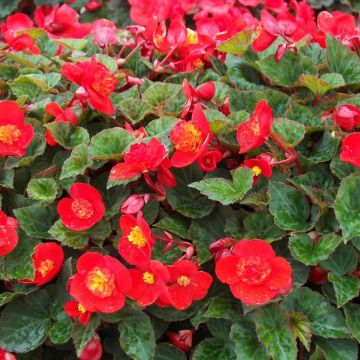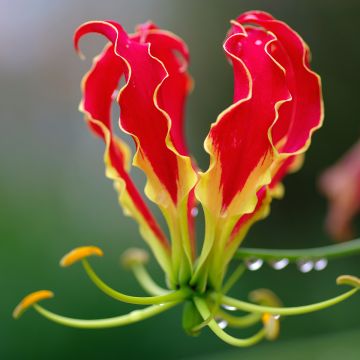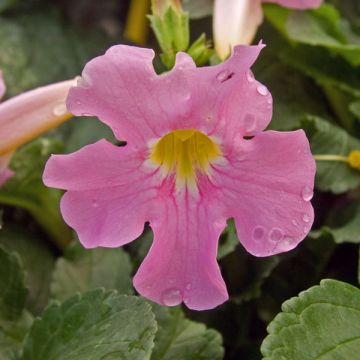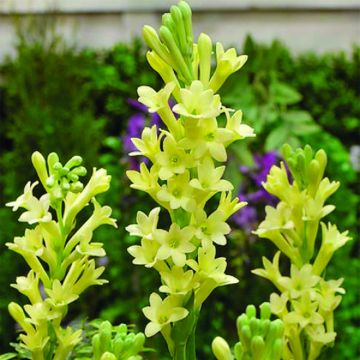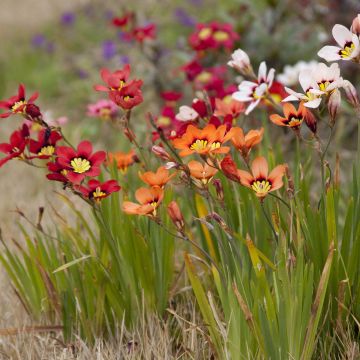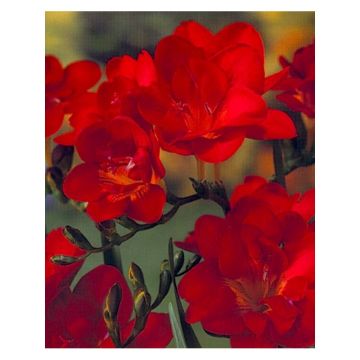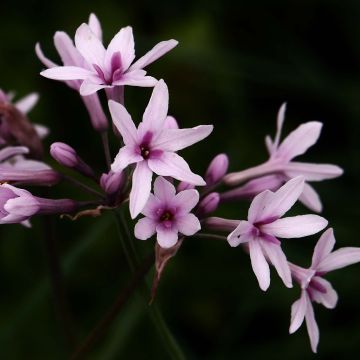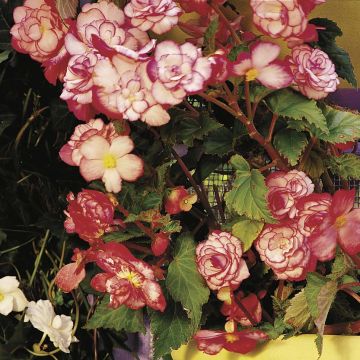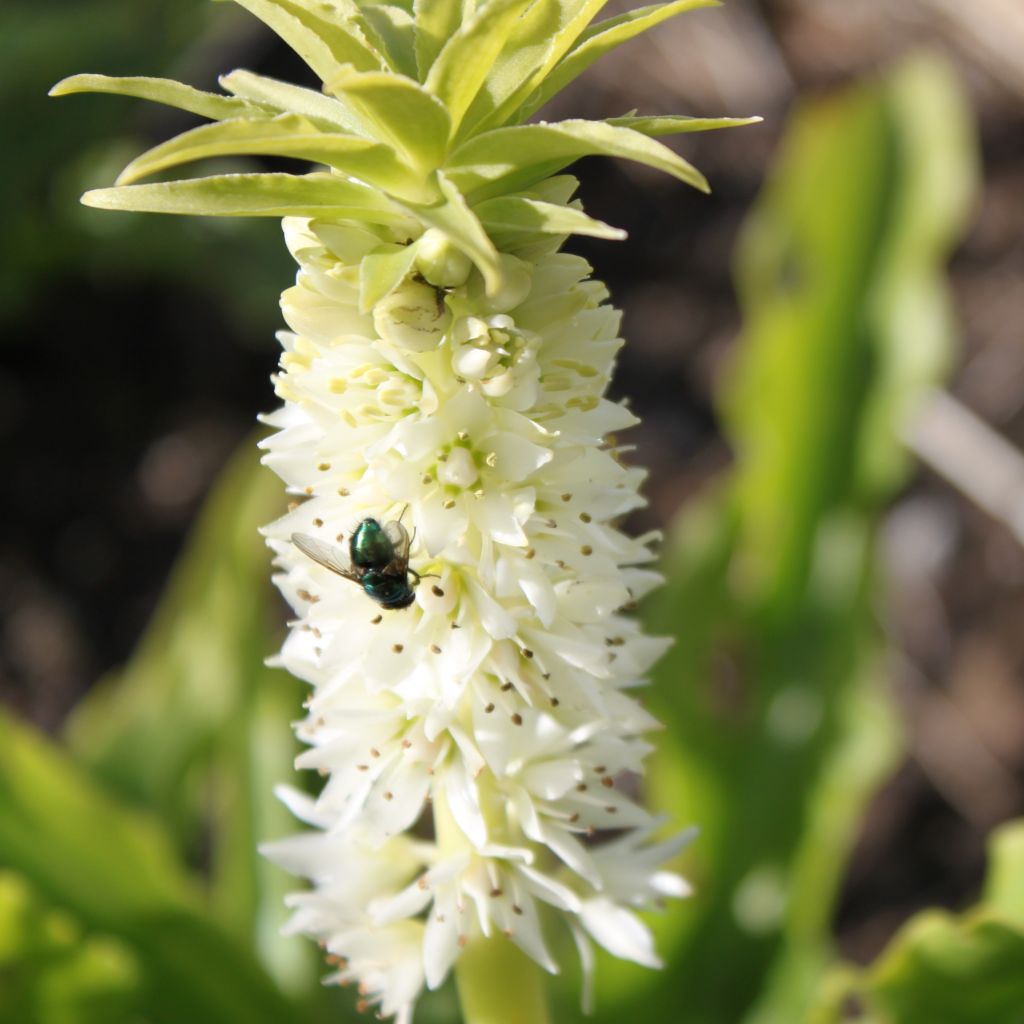

Eucomis autumnalis - Pineapple flower
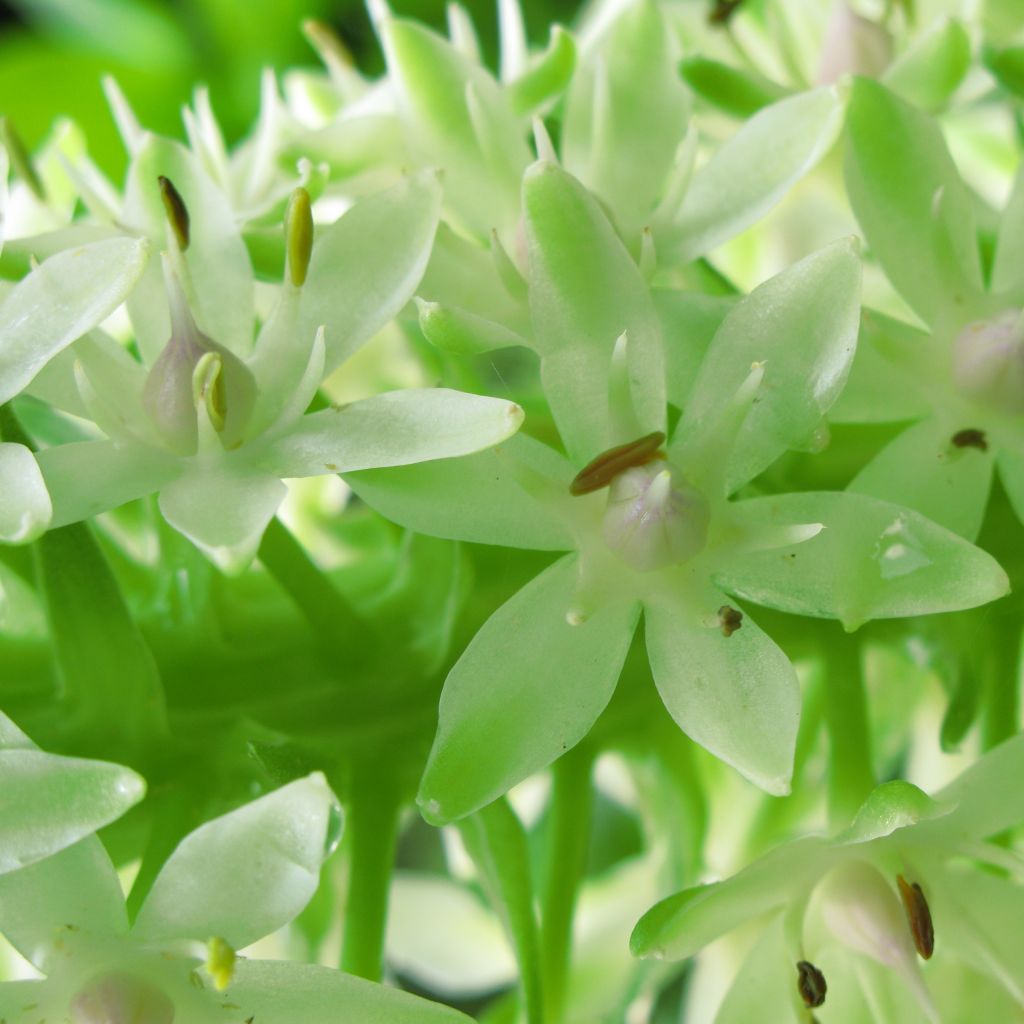

Eucomis autumnalis - Pineapple flower
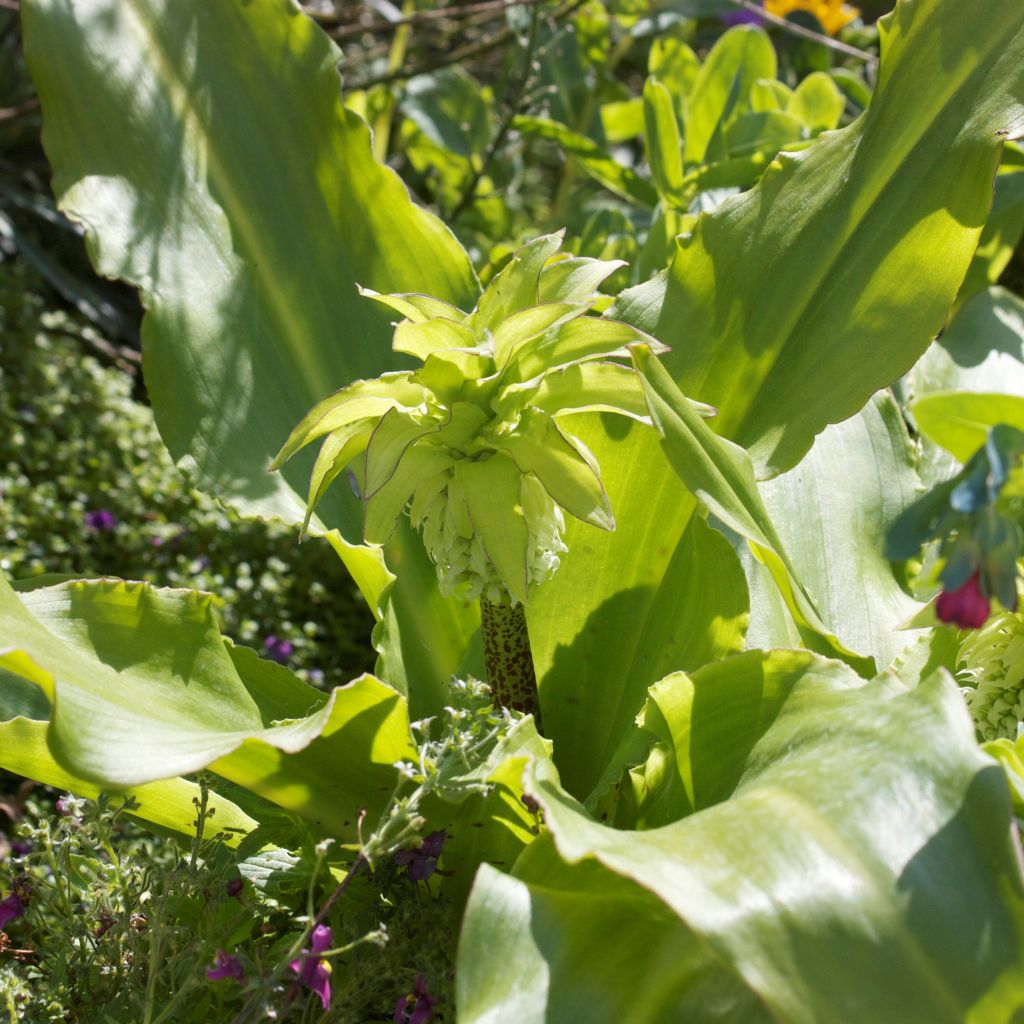

Eucomis autumnalis - Pineapple flower
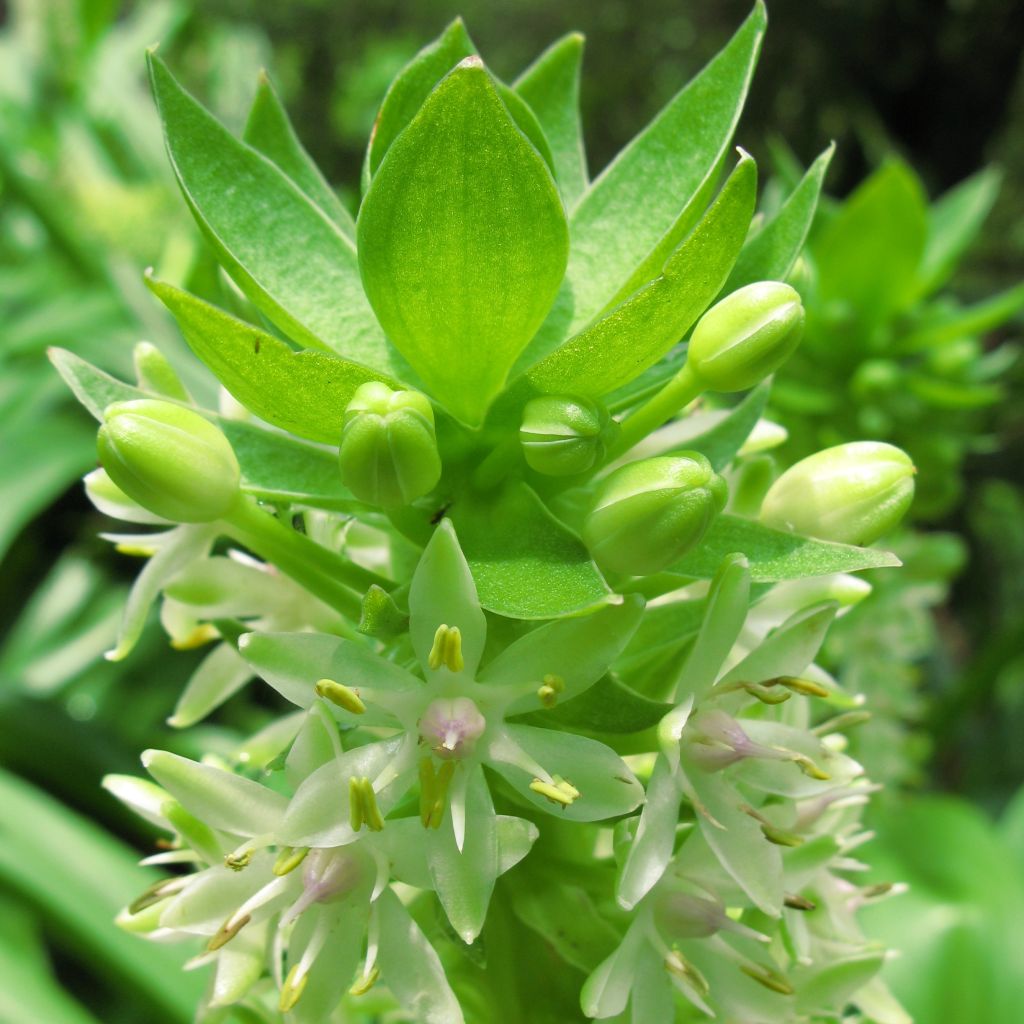

Eucomis autumnalis - Pineapple flower
Eucomis autumnalis - Pineapple flower
Eucomis autumnalis
Pineapple flower, Pineapple lily
Delighted with my order. Everything has been well taken care of and has bloomed beautifully this summer. I recommend Promesse de fleurs to anyone who is hesitant. The young plants are large and very vigorous.
Annie, 21/10/2024
This item cannot be shipped to the selected country
Delivery charge from €5.90
More information
Schedule delivery date,
and select date in basket
This plant carries a 6 months recovery warranty
More information
We guarantee the quality of our plants for a full growing cycle, and will replace at our expense any plant that fails to recover under normal climatic and planting conditions.
From €5.90 for pickup delivery and €6.90 for home delivery
Express home delivery from €8.90.


Does this plant fit my garden?
Set up your Plantfit profile →
Description
This Eucomis automnalis is a South African bulbous plant that is original and elegant. It develops a rosette of foliage with strongly undulating margins, from which peculiar inflorescences of clusters of small pendulous flowers, tinted pale yellow-green, emerge in late summer or autumn. These inflorescences are topped with a leafy tuft reminiscent of a pineapple. The flowers last a long time in the garden and a vase, and the fruiting is also quite decorative, extending the spectacle late into the season. It is also a relatively hardy and easy-to-grow species in full sun or partial shade, planted en masse in rockeries, herbaceous borders, on walls, or in large pots on the terrace.
Eucomis automnalis (synonym Eucomis undulata) belongs to the asparagaceae family. This botanical species, native to the northeast of South Africa, is sometimes called the pineapple flower due to its curious inflorescence resembling that of the pineapple (Ananas comosus), which belongs to the Bromeliaceae family and is native to South America. The autumn Eucomis develops from a giant tunicate bulb measuring up to 10 cm (4in) in diameter. The flowering plant can reach a height of 60 to 80 cm (24 to 32in) if the growing conditions are favourable. In spring, it forms a rosette with a diameter of 60 to 75 cm (24 to 30in), composed of large, soft, fleshy leaves with sharp, undulating edges, measuring 12 to 35 cm (5 to 14in) long. The cylindrical inflorescence does not appear until September-October at the top of a sturdy stem. It comprises about a hundred flowers ranging from yellow to green and is called a raceme. This raceme is topped with a tuft of foliose bracts. The fertilised flowers turn green, while mature fruits reveal round and shiny seeds, initially red burgundy and turning black when ripe, giving a highly decorative aspect to this curious plant.
A bulbous perennial with a very exotic appearance, Eucomis automnalis is planted in groups and will naturally find its place in an exotic pathway, a fresh rockery, a bed composed of rare and original plants, or even in a large container on the terrace or balcony. It is low-maintenance but will thrive in soil rich in humus, consistently moist but well-drained, in full sun or partial shade. Its flowers remain decorative in the garden for a long time and last 1 to 2 weeks in bouquets, while the fruit-laden spikes and seeds can be preserved for nearly a month in a vase. This pineapple flower can be paired with Hedychiums (Hedychium coccineum Tara), Cannas, common castor oil plants, and even small, light grasses such as Stipa tenuifolia, oriental Pennisetum, or Muhlenbergia capillaris.
Report an error about the product description
Eucomis autumnalis - Pineapple flower in pictures
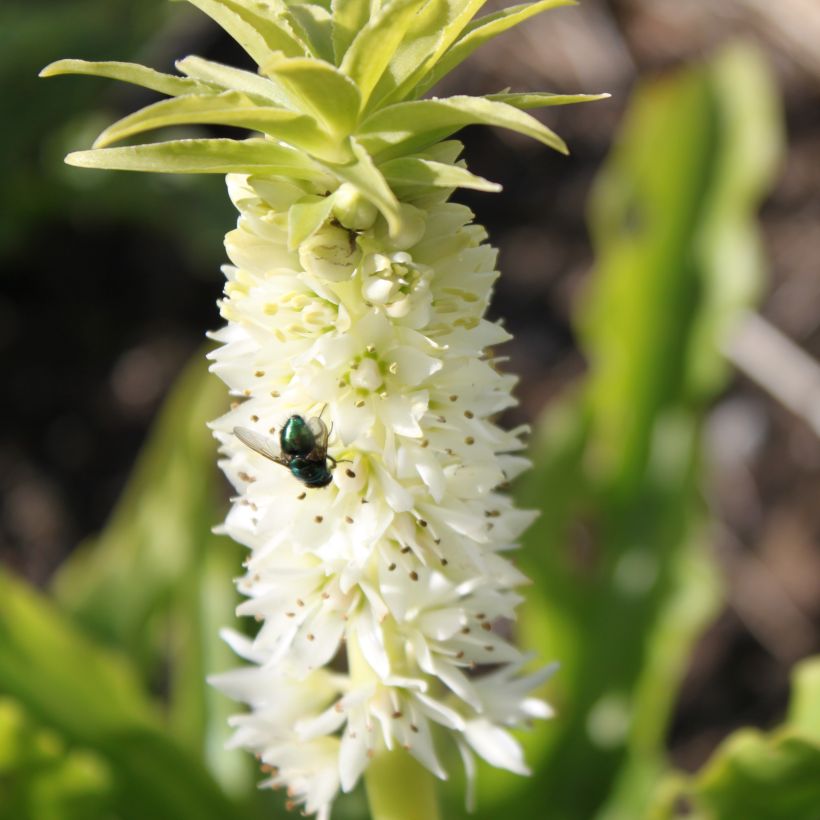

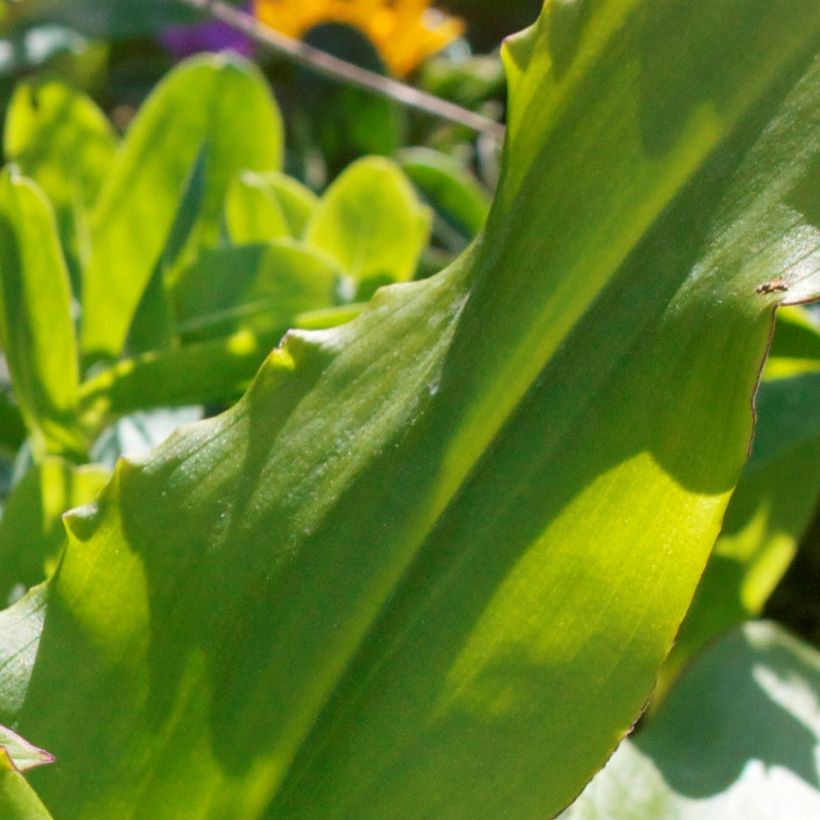

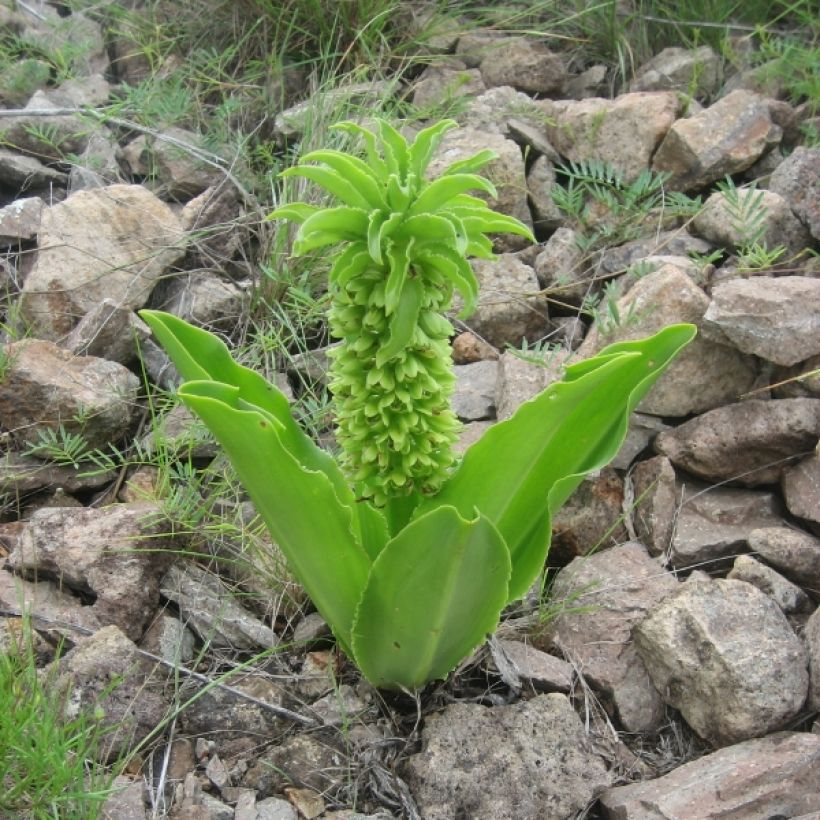

Plant habit
Flowering
Foliage
Botanical data
Eucomis
autumnalis
Hyacinthaceae
Pineapple flower, Pineapple lily
South Africa
Other Eucomis
Planting and care
The Eucomis automnalis should be planted in full sun or partial shade, in a humus-rich and deep soil, remaining moist but well-drained. Position it in a sheltered location away from strong winds that could damage its flowering. In colder regions, covering the stump with a thick layer of dead leaves is advisable, especially if the winter is harsh. Never plant it in the ground in autumn but in spring. This species is hardy up to approximately -15 °C (5°F) (Zone 7).
Planting period
Intended location
Care
-
, onOrder confirmed
Reply from on Promesse de fleurs
Bulbs to grow in pots
Haven't found what you were looking for?
Hardiness is the lowest winter temperature a plant can endure without suffering serious damage or even dying. However, hardiness is affected by location (a sheltered area, such as a patio), protection (winter cover) and soil type (hardiness is improved by well-drained soil).

Photo Sharing Terms & Conditions
In order to encourage gardeners to interact and share their experiences, Promesse de fleurs offers various media enabling content to be uploaded onto its Site - in particular via the ‘Photo sharing’ module.
The User agrees to refrain from:
- Posting any content that is illegal, prejudicial, insulting, racist, inciteful to hatred, revisionist, contrary to public decency, that infringes on privacy or on the privacy rights of third parties, in particular the publicity rights of persons and goods, intellectual property rights, or the right to privacy.
- Submitting content on behalf of a third party;
- Impersonate the identity of a third party and/or publish any personal information about a third party;
In general, the User undertakes to refrain from any unethical behaviour.
All Content (in particular text, comments, files, images, photos, videos, creative works, etc.), which may be subject to property or intellectual property rights, image or other private rights, shall remain the property of the User, subject to the limited rights granted by the terms of the licence granted by Promesse de fleurs as stated below. Users are at liberty to publish or not to publish such Content on the Site, notably via the ‘Photo Sharing’ facility, and accept that this Content shall be made public and freely accessible, notably on the Internet.
Users further acknowledge, undertake to have ,and guarantee that they hold all necessary rights and permissions to publish such material on the Site, in particular with regard to the legislation in force pertaining to any privacy, property, intellectual property, image, or contractual rights, or rights of any other nature. By publishing such Content on the Site, Users acknowledge accepting full liability as publishers of the Content within the meaning of the law, and grant Promesse de fleurs, free of charge, an inclusive, worldwide licence for the said Content for the entire duration of its publication, including all reproduction, representation, up/downloading, displaying, performing, transmission, and storage rights.
Users also grant permission for their name to be linked to the Content and accept that this link may not always be made available.
By engaging in posting material, Users consent to their Content becoming automatically accessible on the Internet, in particular on other sites and/or blogs and/or web pages of the Promesse de fleurs site, including in particular social pages and the Promesse de fleurs catalogue.
Users may secure the removal of entrusted content free of charge by issuing a simple request via our contact form.
The flowering period indicated on our website applies to countries and regions located in USDA zone 8 (France, the United Kingdom, Ireland, the Netherlands, etc.)
It will vary according to where you live:
- In zones 9 to 10 (Italy, Spain, Greece, etc.), flowering will occur about 2 to 4 weeks earlier.
- In zones 6 to 7 (Germany, Poland, Slovenia, and lower mountainous regions), flowering will be delayed by 2 to 3 weeks.
- In zone 5 (Central Europe, Scandinavia), blooming will be delayed by 3 to 5 weeks.
In temperate climates, pruning of spring-flowering shrubs (forsythia, spireas, etc.) should be done just after flowering.
Pruning of summer-flowering shrubs (Indian Lilac, Perovskia, etc.) can be done in winter or spring.
In cold regions as well as with frost-sensitive plants, avoid pruning too early when severe frosts may still occur.
The planting period indicated on our website applies to countries and regions located in USDA zone 8 (France, United Kingdom, Ireland, Netherlands).
It will vary according to where you live:
- In Mediterranean zones (Marseille, Madrid, Milan, etc.), autumn and winter are the best planting periods.
- In continental zones (Strasbourg, Munich, Vienna, etc.), delay planting by 2 to 3 weeks in spring and bring it forward by 2 to 4 weeks in autumn.
- In mountainous regions (the Alps, Pyrenees, Carpathians, etc.), it is best to plant in late spring (May-June) or late summer (August-September).
The harvesting period indicated on our website applies to countries and regions in USDA zone 8 (France, England, Ireland, the Netherlands).
In colder areas (Scandinavia, Poland, Austria...) fruit and vegetable harvests are likely to be delayed by 3-4 weeks.
In warmer areas (Italy, Spain, Greece, etc.), harvesting will probably take place earlier, depending on weather conditions.
The sowing periods indicated on our website apply to countries and regions within USDA Zone 8 (France, UK, Ireland, Netherlands).
In colder areas (Scandinavia, Poland, Austria...), delay any outdoor sowing by 3-4 weeks, or sow under glass.
In warmer climes (Italy, Spain, Greece, etc.), bring outdoor sowing forward by a few weeks.

































